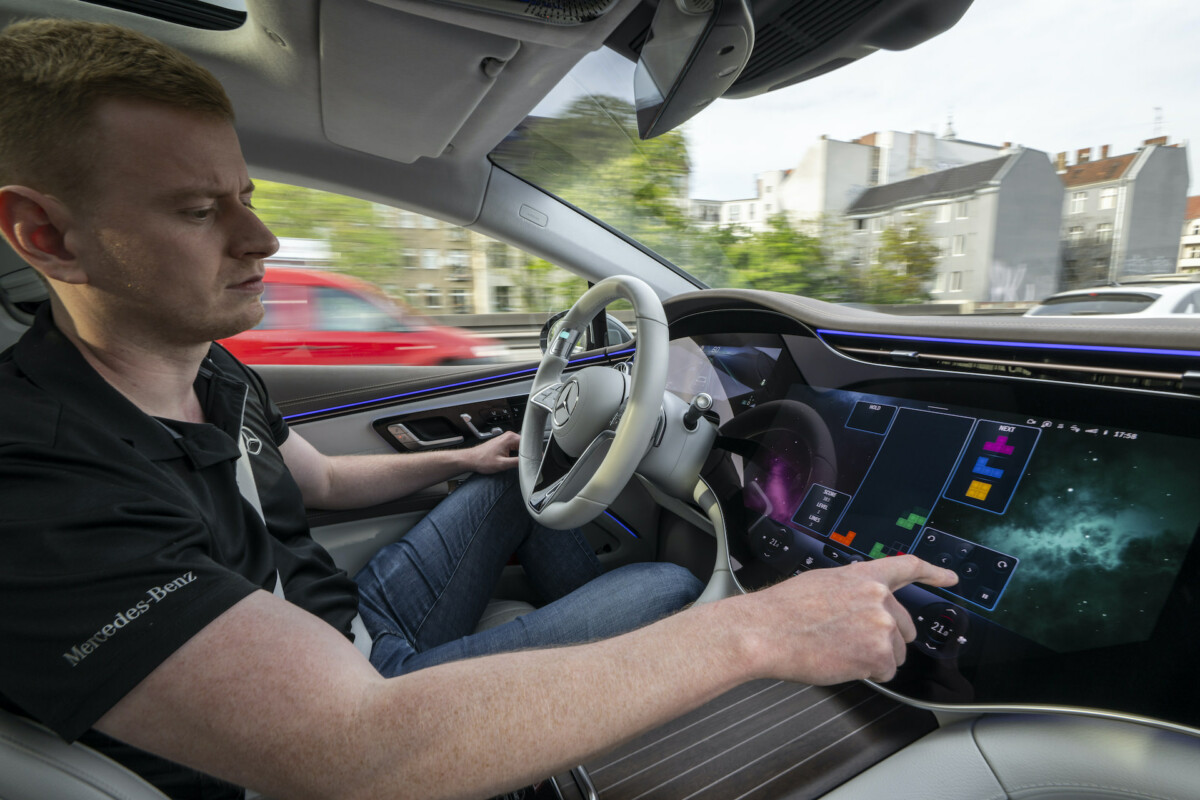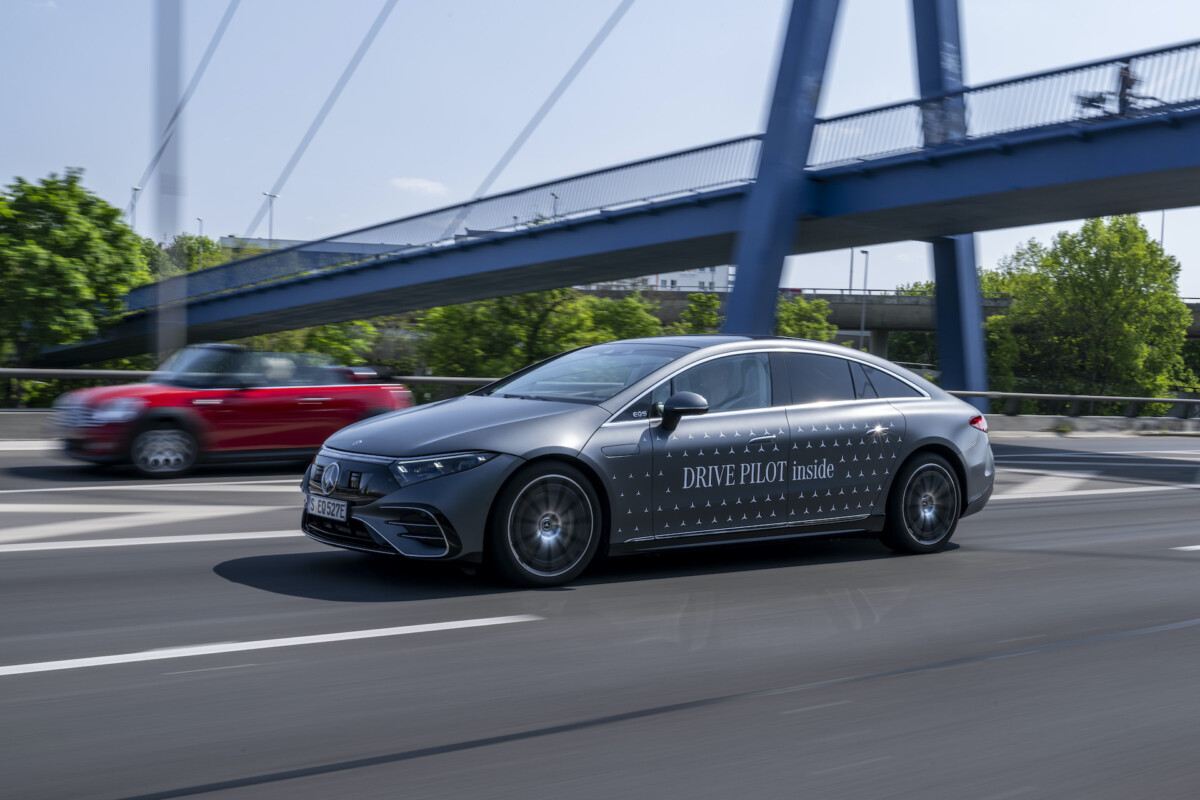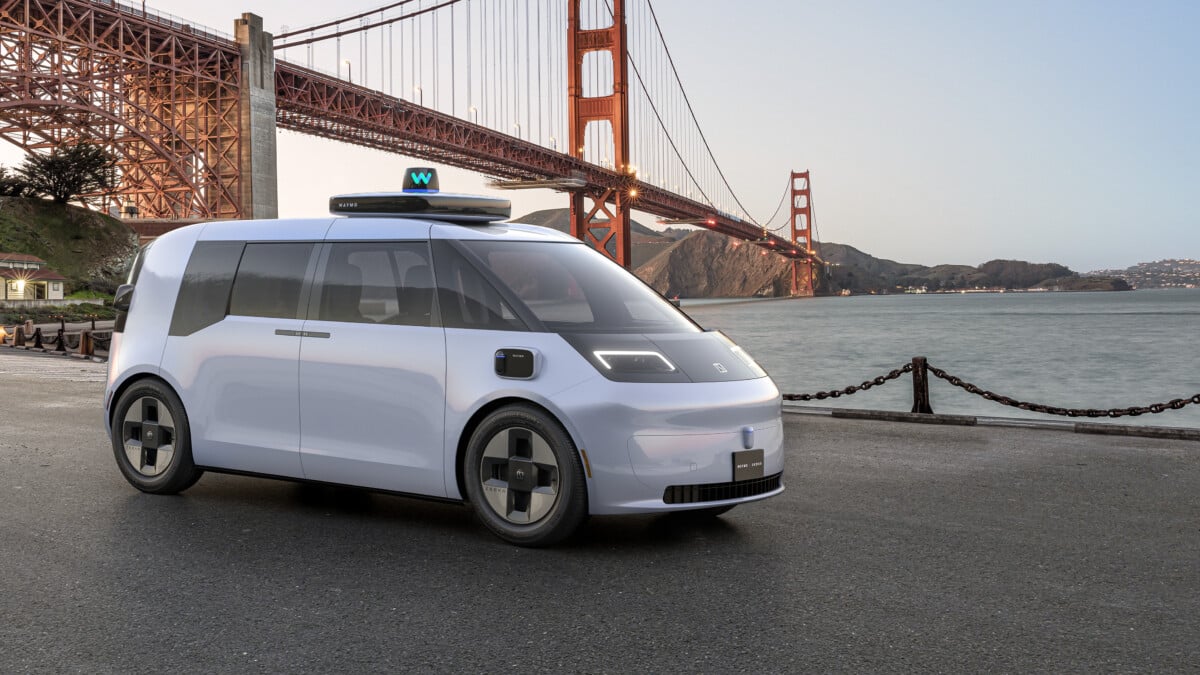We explain to you what the different levels of autonomous driving correspond to. Between fully autonomous driving, semi-autonomous driving and driving aids, we help you see things more clearly.
Today, virtually every mobility player, and more, has looked into self-driving vehicles. Tesla with its Autopilot, the Stellantis group with Valéo, Renault, Google Waymo, Mercedes with its new EQS, Uber, Volvo… all are working on autonomous vehicle driving.
The legislation has never really been very clear regarding autonomous vehicles. There is often confusion between driving aids and autonomous driving. Driving aids (adaptive cruise control, lane keeping, etc.) are increasingly efficient but cannot do without a human driver. Quite the opposite of autonomous driving, which must be able to do without human presence.
Define what human drivers and autonomous systems can and cannot do
In 2014, the SAE (for Society of Automotive Engineers) International, a professional organization that brings together several scientists and engineers, has proposed a grid for understanding and classifying autonomous vehicles. This grid is therefore at the origin of the classification into categories, making it possible to define what can or cannot be done by human drivers and autonomous systems.
It is also a reference for manufacturers and governments who regularly consider the various issues related to the mobility of the future, mobility sometimes directly linked to autonomous systems. The International Organization of Automobile Manufacturers (OICA) has also defined a European scale with six levels of autonomy for vehicles, a system similar to that designed by the SAE.
Level 0: only warnings
As its name suggests, it is the zero level of autonomy and assistance. Understand by this that the entire driving part is carried out by the driver, without any help from the car. Here, no cruise control, no automatic emergency braking or even lane keeping assistance.
Level 0, however, includes autonomous driving features: automatic emergency braking, blind spot warning and lane departure warning. This is a warning, via various visual and audible signals, but the car will not change its speed or trajectory.
Level 1: a main driving aid, no more!
This is generally what we found on new cars from the 2010s. The driver is obviously present 100% of the time and the car is not supposed to make any decision “alone”. But it offers various driving assistance features to the driver.
Among these assistances, we can quote adaptive cruise control (car speeds up and slows down on its own) and lane keeping assist (to stay in the center of it).
Level 1 allows only one of these two features to work at the same time. If they work in parallel, then we go to level 2.
Level 2: the car accelerates, brakes and turns
As with level 1, the driver must keep an eye on his surroundings to be able to quickly regain control of the vehicle if necessary. Level 2 allows the car to speed up, slow down and keep its place in the lane on its own. The driver is always responsible for driving.
It is for this reason that you must (depending on the car) either hold the steering wheel in your hands or continue to watch the road. It is this last path that Cadillac has chosen with its Super Cruise, thanks to a camera in the cabin which monitors the driver and calls him to order if he no longer looks at the road.

From January 1, 2023, cars will also be able to overtake on their own, without human intervention or validation. As is already the case in the United States where Teslas can make the decision to double. In Europe, Tesla waits for the order to come from the driver (via the turn signal comodo) before starting the automatic overtaking procedure.
YouTube linkSubscribe to Frandroid
Level 2 is the most common level in new cars at the moment and takes on a different name depending on the manufacturer. At Tesla, Autopilot is level 2, including with the Full Self Driving pack in beta in the United States. Indeed, the driver must remain in control of his vehicle and be able to regain control at any time. This is what distinguishes level 2 from level 3.
Level 3: conditional autonomous driving
It is from there that we can really start talking about autonomous vehicles. The car will use similar features at Level 2, but with one big difference: the driver is no longer responsible for driving. It is the car that “drives” and the driver then becomes a simple passenger.
Be careful, however, since the car can ask the driver to take the wheel again, if it no longer meets the conditions necessary for level 3 autonomous driving. Thus, in Europe, level 3 autonomous driving is not accessible everywhere and all the time.
Geographically, the car must be on a road prohibited for pedestrians and cyclists, with a central separator. In France, this is the case for roads with limited access (2 x 2 lanes) and motorways.

The maximum speed is then limited to 60 km/h, which makes it possible to delegate driving to the car in motorway traffic jams for example. This speed may be increased to 130 km/h from January 1, 2023 in a very specific case: when the car is equipped with the ability to overtake without human intervention.
Level 3 indicates that the driver must be able to regain control of the vehicle at any time, but that the car is perfectly autonomous in certain conditions.
In the event of an accident and from this level of autonomous driving, it is no longer the driver who is responsible but the manufacturer. We therefore understand why the latter are reluctant to authorize this kind of functionality.

Today, some production cars oscillate between levels 2 and 3. This is particularly the case of Tesla which, a few years ago, offered a very convincing automatic driving system, but today unfortunately restricted by the standards of the European legislator which obliges the mark to review its copy.
For the moment, because of the legislator, the Teslas are still under level 2 of autonomy, but they tick a few boxes of level 3. The Californian company claims to be ready when level 3 of autonomy is legalized and democratized .
Mercedes is currently the only car manufacturer to offer a car compatible with level 3 autonomous driving thanks to the new S class and the 100% electric EQS with the Drive Pilot option and its LiDAR. But at the moment only on more than 13,000 km/h of German autobahns at a speed limit of 60 km/h, in good weather and daytime.
The Chinese manufacturer Xpeng is working hard on a level 3 autonomous driving system and recently demonstrated it rather convincingly.
Level 4: complete autonomy but not everywhere
With level 4, the driver is no longer necessary. It is the car that bears the responsibility for driving. But only in certain circumstances and on certain roads.
The vehicle provides the entire driving process completely autonomously, that is to say without even the necessary presence of a driver on board. The system bears its responsibilities for all the actions it will carry out, in particular concerning maneuvers or its decisions according to the evolution of the environment.
It is thus possible to remove the steering wheel and the pedals. Level 4 thus corresponds to autonomous taxis which are limited to certain areas, such as the Alphabet Waymo shuttles or the Hyundai Ioniq 5 in Korea.
Level 5: complete autonomy, everywhere, all the time
The vehicle combines absolutely all driving tasks and is not subject to any human intervention. Whether on the motorway or in the city center, night or day, it is capable of evolving in total autonomy.
Here, there are no more limitations related to geographical area or speed. The level 5 autonomous car would thus be possible to cross Europe, from Lisbon to Bergen without any human intervention. But there is still a long way to go to get there.

Autonomous cars and France
As for many countries, France has also set its conditions regarding the use and arrival of autonomous vehicles. Of course, many questions remain around such a subject, particularly in terms of ethics, but also in terms of insurance.
An ordinance taken in the Council of Ministers by the French government on Wednesday August 3, 2016, authorizes the testing of driverless cars on the roads of France. Until now, authorizations were issued on a case-by-case basis. For example, in 2017, France and Germany agreed to test driverless cars over 70 kilometers between Metz and Merzig on road and motorway.
When will 100% autonomous cars arrive?
Certainly not for tomorrow. If the manufacturers are generally well advanced on this subject, it is the legislator who will have the last word, especially in Europe. There are still many parameters to take into account and the degree of autonomy of a vehicle does not depend solely on itself, but also of the surrounding environment. Thus, cities will also have to be connected to make traffic more fluid or to send information to autonomous vehicles.
We have also recently noted a slight drop in interest from car manufacturers regarding the total autonomy of vehicles, in particular since certain short-term issues are more important, such as those related to the energy transition. The budget dedicated to the research and development of autonomous cars had to be cut in some cases to be transferred to other sectors, in particular that of electric powertrains or batteries.
Some manufacturers also delegate these activities to companies specializing in new technologies. This is the case of the Renault-Nissan-Mitsubishi Alliance, which has partnered with Waymo, a company belonging to Google, for the assessment of market opportunities and for joint work in order to provide a commercial, legal and regulations for autonomous cars in France and Japan.
To follow us, we invite you to download our Android and iOS application. You can read our articles, files, and watch our latest YouTube videos.


